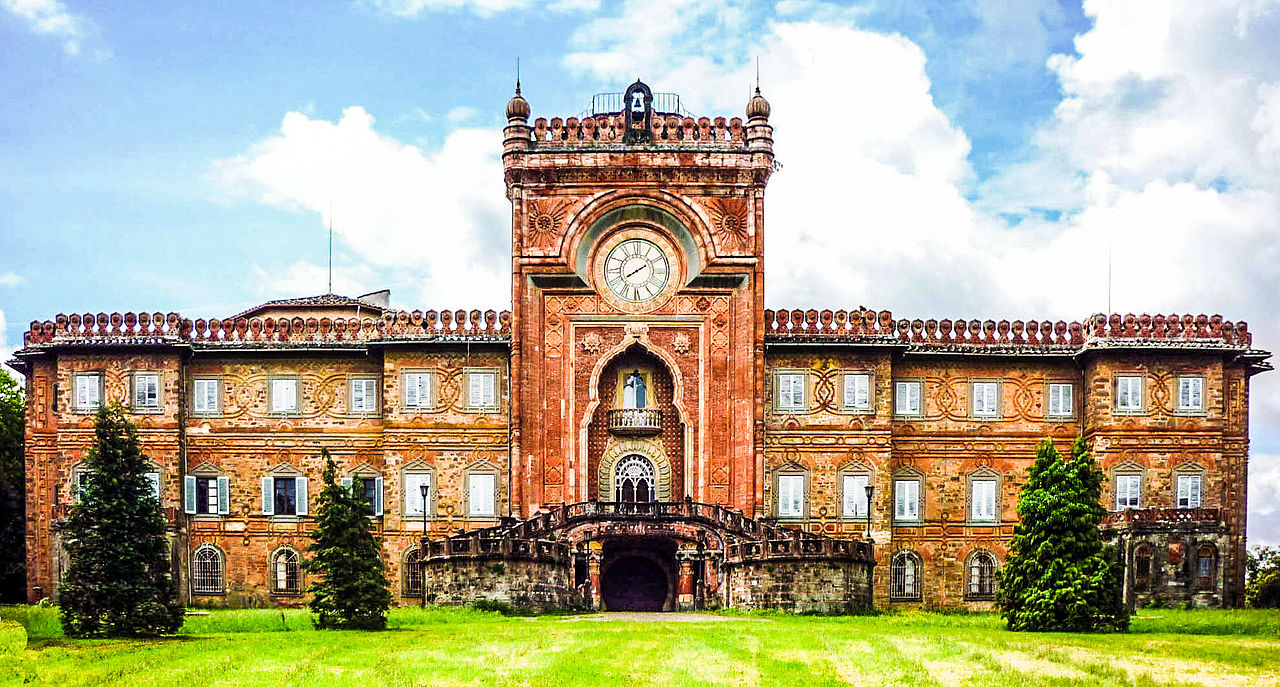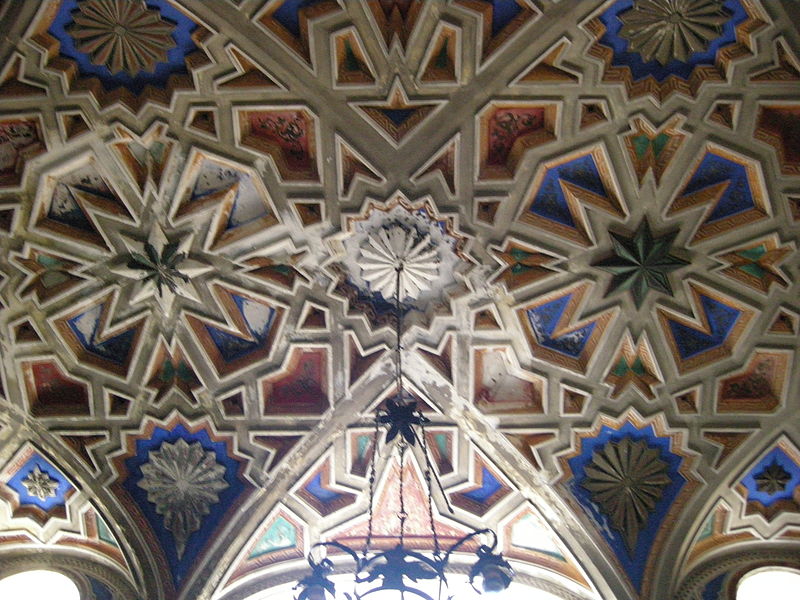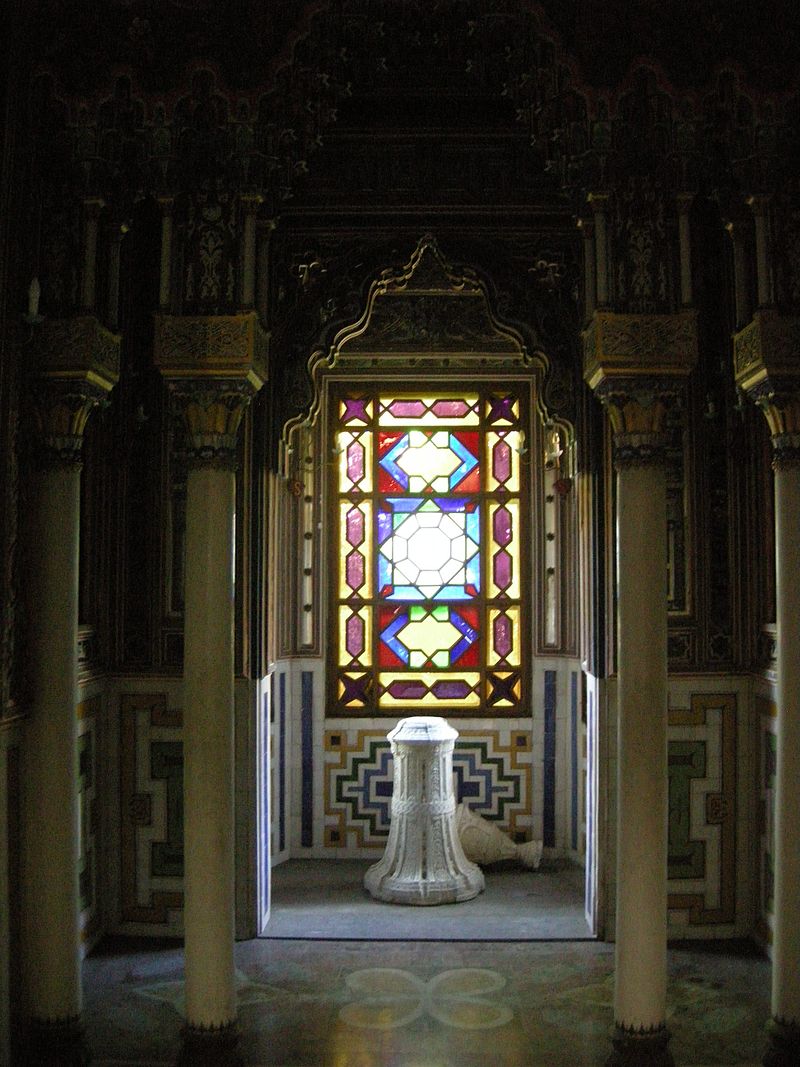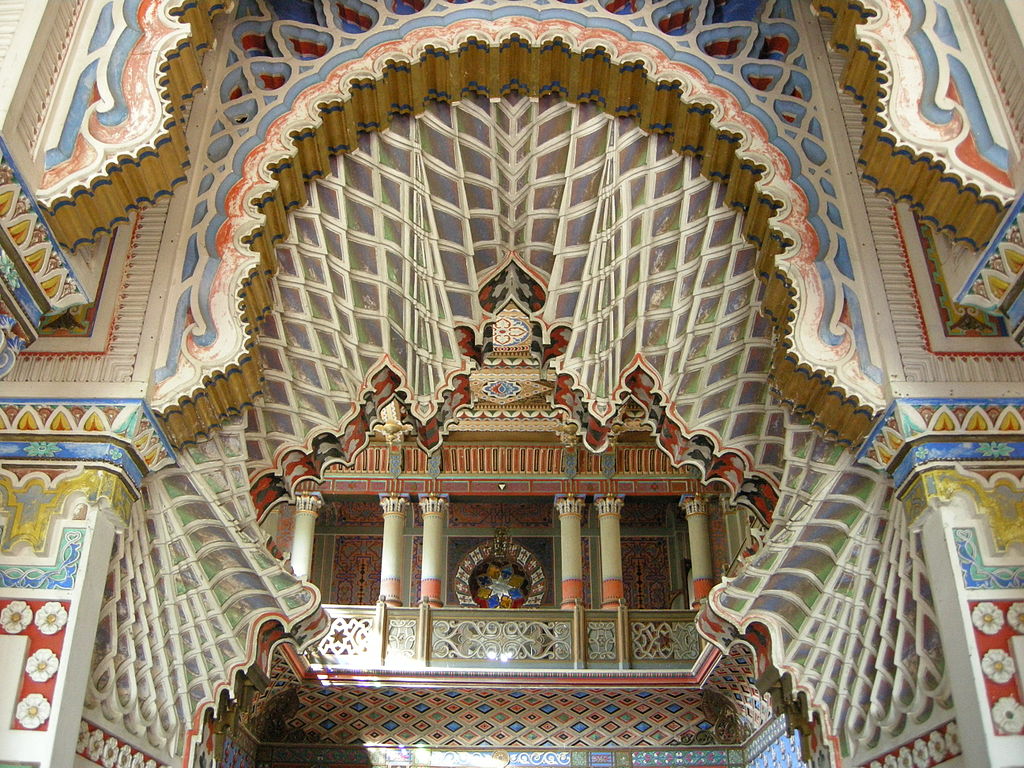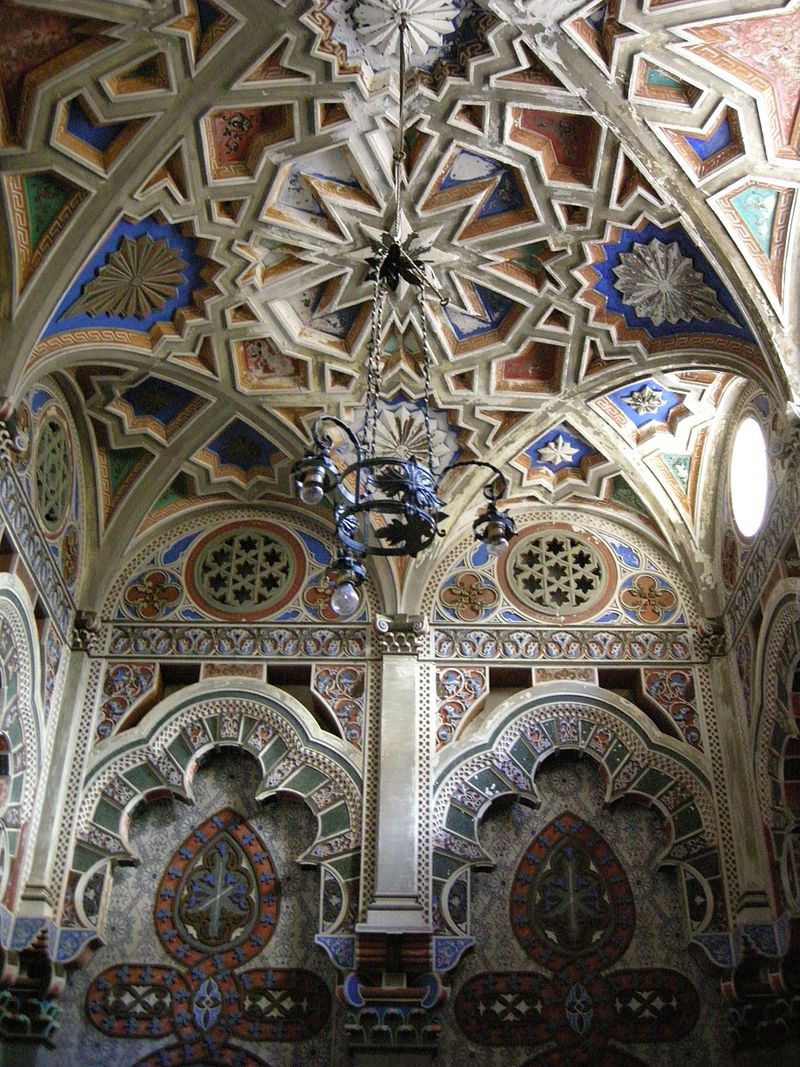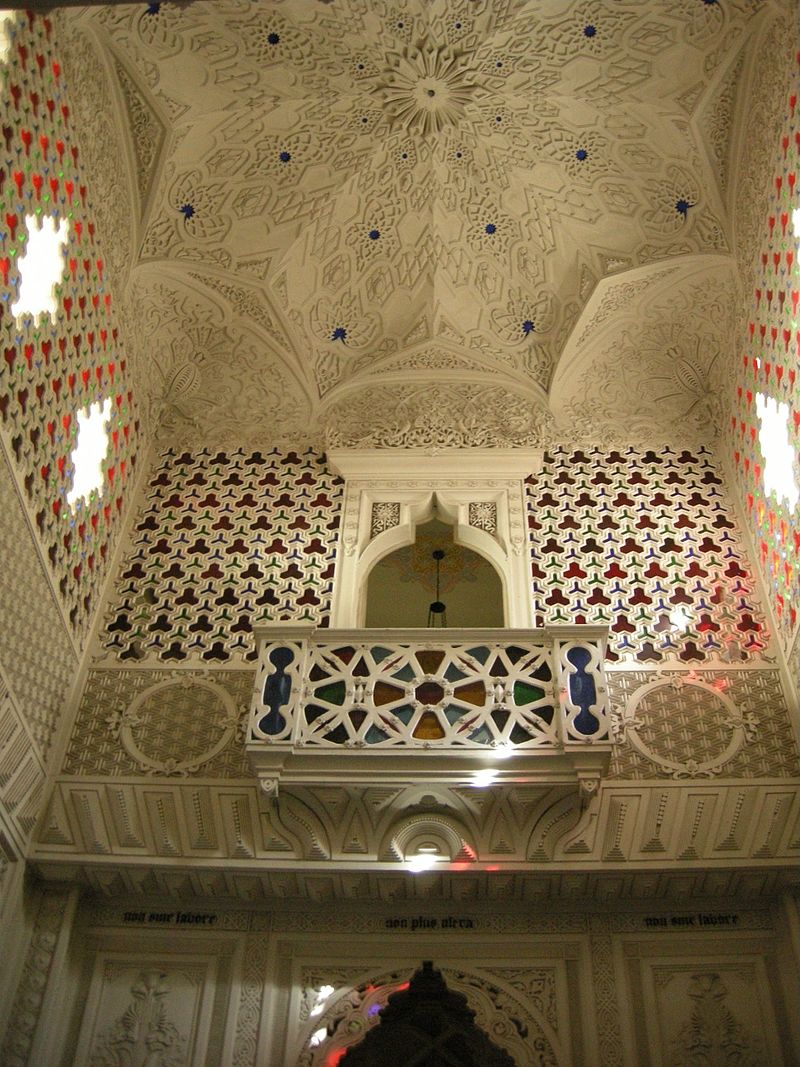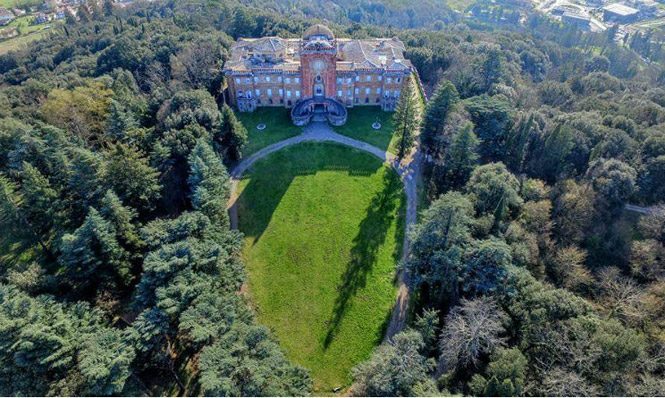
Sammezzano Castle
This post is also available in:
 Italiano (Italian)
Italiano (Italian)
Sammezzano Castle, in Leccio – Regello – between Chianti and Pratomagno, is an eclectic construction and a mixture of Arab-Byzantine and Indo-European styles plunged in a park of 470 acres. The latter features many trees coming from every corner of the planet, Moorish bridges, artificial caves, Chinese-style buildings, and Tuscan country houses with great artistic value.
Unfortunately, the park and the castle, both of incredible beauty, are currently abandoned and closed the public. At some point in the past, they could be visited thanks to a group of volunteers from the Municipality of Reggello, but that’s not possible any more.
The following information was thus taken from the official website www.savesammezzano.com
History
The earliest records of this place date back to Roman times: around the year 1000, the castle was built on the ruins of a Roman fort. Between 1000 and 1600, the medieval fortress and the surrounding estate belonged to various noble families, including the Gualtierottis, the Altovitis and, finally, the Medicis. In 1596, the Grand Duke Ferdinando I de ‘Medici sold everything to Ferdinando of Odoardo Ximenes of Aragon, whose family – originally from Castigli – retained the property until 1816 when their last heir Ferdinand died. The name, the coat of arms, all the titles and the benefits (including Sammezzano estate) of the Ximenes d’Aragona were then inherited by Pietro Leopoldo, the eldest son of Vittoria Ximenes d’Aragona, the sister of Ferdinand and the wife of the noble Niccolò Panciatichi from Pistoia.
On the death of Pietro Leopoldo, everything was inherited by his son, the Marquis Ferdinando Panciatichi Ximenes d’Aragona. In 1852-1889, the latter completely changed the XVII century appearance of the castle, inverting the facades (the north one, called Lunar Facade, became the main one, while the one facing south, called Solar Facade, became the secondary facade) and transforming it into one of the most important eclectic-oriental palaces in Europe. He also had a furnace built in the park: bricks, stucco and tiles were in fact produced right there. In 1878, the castle hosted the King of Italy Umberto I.
On the death of the Marquis in 1897, the property, administered by his daughter Marianna Panciatichi-Paolucci – a well-known ornithologist and expert in malacology – passed to his grandsons Ferdinando, Alessandro and Marianna Di San Giorgio. Between 1900 and 1915, Marianna auctioned all the original furniture.
Between 1940 and 1945, the Castle was looted by the Nazis, used as a deposit by the Military Institute of Florence and then requisitioned by too the Allies for over a year. In 1955, it was sold to the company “Sammezzano S.p.A.”, intended to be used as a student college, but that did not happen. In 1973, it was transformed into a luxury hotel restaurant, preserving the monument floor for ceremonies, events, and film sets. In 1990, the hotel business stopped. After several other changes of ownership and restoration attempts, in 2000 the Castle was finally closed and abandoned, becoming prey to vandals and thieves until completely looted.
Today, Sammezzano Castle is subject to the local Superintendency management, and it is included in the “Red List” of the National Cultural Heritage (the list of endangered buildings and historical sites) promoted by Italia Nostra Association – it is one of the 12 most endangered cultural sites in Europe as officially listed also by Europa Nostra Association.
Since 2015, Save Sammezzano Association has been carrying out an awareness campaign, in order to ask for its protection, restoration and reopening for visits.
The park
Until the arrival of Ferdinando Panciatichi, at the beginning of the XIX century, Sammezzano Castle had a large Italian garden, featuring the typical arrangement and symmetry of Renaissance villas. The new owner decided to transform it into an English garden, very popular back then, free from fixed layouts and opened onto the surrounding landscape. He personally designed several new access roads, following a winding course on the hill and wide enough to be crossed by carriages. Panciatichi eventually inserted also several many Moorish artefacts and rare plants.
The most evocative road is the one that starts in Ragnaia, winding through fir, oak and holm oak woods until it becomes a large avenue of holm oaks (Quercus ilex) and sequoias (Sequoia sempervirens). Of the latter, the estate perhaps retains the greatest concentration in Europe and a particular specimen, called “Sequoia twin” and 177-foot high is the second tallest tree in Italy. Originally from California, these sequoias arrived in England in the XIX century and then spread throughout Europe. In this foggy area, as well as in many other parts of Italy, those trees found a perfect habitat. The Marquis bought the first plant in 1864.
He also built a hunting lodge, intended for guests, surrounded by a garden in which magnolias, yuccas and citrus plants grew arranged out of geometric order, with bending paths and a stone basin to collect irrigation water. Now everything is in very bad conditions.
Even in front of the castle, the garden has completely lost its original beautiful look designed by the Marquis who, for instance, had a large lawn built in front of the building in order to emphasize its facade. A terracotta curb was even specifically built to evoke the arabesque motifs on the building façade. Again, also that precious work of craftmanship is lost forever.
Today, the building is hidden by large holm oaks, which were regularly pruned until the 1970s. The Marquis introduced many plants into the park, which he himself catalogued in 1849 in a Plantarium which was later lost.
Today, very little remains of the XIX century park as well: very few centenary trees, monumental sequoias and other plants – most of them had been lost due to the climate (cold winters and dry summers), lack of maintenance, landslides and looting.
In the 1990s, new plants were planted, but this time according to the Italian garden style: the opposite of Ferdinand’s original design and vision.
This post is also available in:
 Italiano (Italian)
Italiano (Italian)
Contatti
Al Quartaio, Località Sociana 2 - 50066 Reggello (FI)(FI)
al momento non disponibile
http://www.castellosammezzano.org
Altre info
Su prenotazione
